Related Research Articles

D, or d, is the fourth letter of the modern English alphabet and the ISO basic Latin alphabet. Its name in English is dee, plural dees.
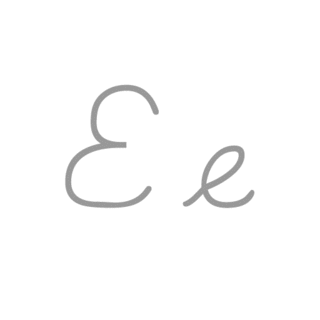
E, or e, is the fifth letter and the second vowel letter in the modern English alphabet and the ISO basic Latin alphabet. Its name in English is e ; plural ees, Es or E's. It is the most commonly used letter in many languages, including Czech, Danish, Dutch, English, French, German, Hungarian, Latin, Latvian, Norwegian, Spanish, and Swedish.
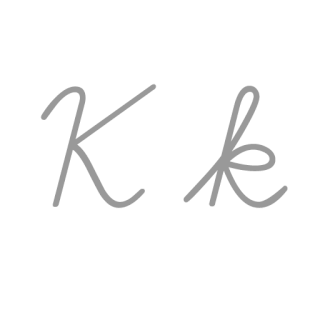
K, or k, is the eleventh letter of the modern English alphabet and the ISO basic Latin alphabet. Its name in English is kay, plural kays. The letter K usually represents the voiceless velar plosive.
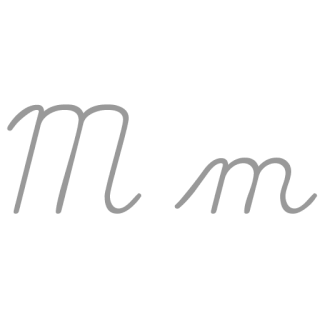
M, or m, is the thirteenth letter of the modern English alphabet and the ISO basic Latin alphabet. Its name in English is em, plural ems.

P, or p, is the sixteenth letter of the modern English alphabet and the ISO basic Latin alphabet. Its name in English is pee, plural pees.
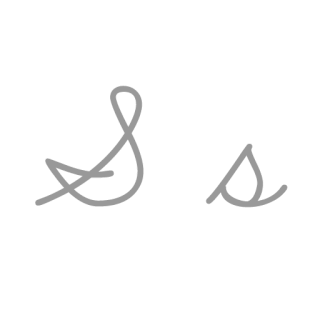
S, or s, is the nineteenth letter in the Modern English alphabet and the ISO basic Latin alphabet. Its name in English is ess, plural esses.
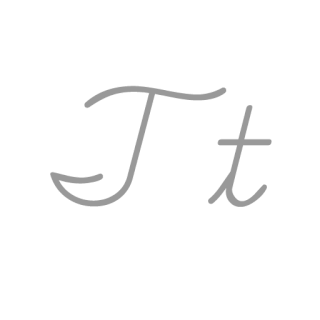
T, or t, is the twentieth letter in the modern English alphabet and the ISO basic Latin alphabet. Its name in English is tee, plural tees. It is derived from the Semitic Taw 𐤕 of the Phoenician and Paleo-Hebrew script via the Greek letter τ (tau). In English, it is most commonly used to represent the voiceless alveolar plosive, a sound it also denotes in the International Phonetic Alphabet. It is the most commonly used consonant and the second most commonly used letter in English-language texts.
The symbol # is known variously in English-speaking regions as the number sign, hash, or pound sign. The symbol has historically been used for a wide range of purposes including the designation of an ordinal number and as a ligatured abbreviation for pounds avoirdupois – having been derived from the now-rare ℔.
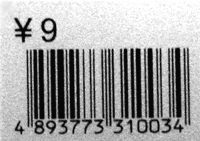
The yen and yuan sign, ¥, is a currency sign used for the Japanese yen and the Chinese yuan currencies when writing in Latin scripts. This monetary symbol resembles a Latin letter Y with a single or double horizontal stroke. The symbol is usually placed before the value it represents, for example: ¥50, or JP¥50 and CN¥50 when disambiguation is needed. When writing in Japanese and Chinese, the Japanese kanji and Chinese character is written following the amount, for example 50円 in Japan, and 50元 or 50圆 in China.
Albert Marius Soboul was a historian of the French Revolutionary and Napoleonic periods. A professor at the Sorbonne, he was chair of the History of the French Revolution and author of numerous influential works of history and historical interpretation. In his lifetime, he was internationally recognized as the foremost French authority on the Revolutionary era.

Antoine Bernard-Jean Marfan was a French paediatrician.

An arthropathy is a disease of a joint.
Kenyan Sign Language is a sign language used by the deaf community in Kenya and Somalia. It is used by over half of Kenya's estimated 600,000 deaf population. There are some dialect differences between Kisumu, Mombasa and Somalia.

L, or l, is the twelfth letter of the modern English alphabet and the ISO basic Latin alphabet. Its name in English is el, plural els.
The Medulli were a Gallic tribe dwelling in the upper valley of Maurienne, around present-day Modane (Savoie), during the Iron Age and Roman period.
Lethargy is a state of tiredness, sleepiness, weariness, fatigue, sluggishness or lack of energy. It can be accompanied by depression, decreased motivation, or apathy. Lethargy can be a normal response to inadequate sleep, overexertion, overworking, stress, lack of exercise, improper nutrition, boredom, or a symptom of an underlying illness or a disorder. It may also be a side-effect of medication or caused by an interaction between medications or medication(s) and alcohol. It may also be an altered level of consciousness.
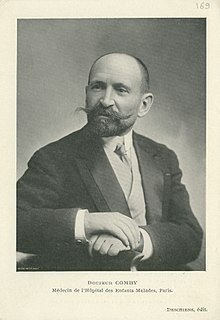
Jules Comby was a French pediatrician.
Environmentalists for Nuclear Energy (EFN) — in French: "Association des Écologistes Pour le Nucléaire – AEPN, founded in 1996" — is a pro-nuclear power non-profit organization that aims to provide information to the public on energy and the environment. It also promotes the benefits of nuclear energy for a cleaner world, and aims at uniting people in favor of clean nuclear energy. EFN is funded by the memberships and donations of its members.
Egyptian Sign Language is a sign language used by members of the deaf community in Egypt. Although there are no official statistics on the number of deaf people or the number of people who use Egyptian Sign Language as their primary language, Gallaudet University's library resources website quotes a 1999 estimate of 2 million hearing impaired children, while a 2007 study by the World Health Organization places the prevalence of hearing loss in Egypt at 16.02% across all age groups. Egyptian Sign Language is not formally recognized by the government.
37th Infantry Division was an infantry division of the French Army active during the First World War.
References
- ↑ Comby's sign Archived 2016-03-03 at the Wayback Machine at Mondofacto online medical dictionary
- ↑ Comby's sign at TheFreeDictionary.com